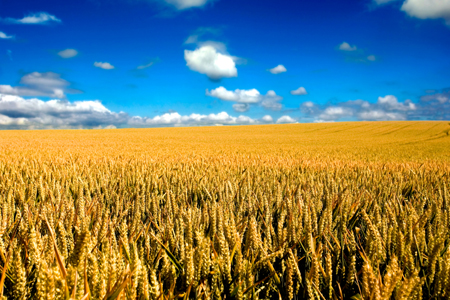Harsh Climates Impacting National Crop Yield
Category: Grains, Miscellaneous, Oilseeds
 Exorbitantly high temperatures paired with virtually no rainfall created a recipe for devastatingly low crop production and yields throughout the United States this summer. This unusual weather pattern deprived vital commodities such as corn and soybeans of needed moisture to yield desired amounts, impacting both the consumer and the economy as a whole.
Exorbitantly high temperatures paired with virtually no rainfall created a recipe for devastatingly low crop production and yields throughout the United States this summer. This unusual weather pattern deprived vital commodities such as corn and soybeans of needed moisture to yield desired amounts, impacting both the consumer and the economy as a whole.
In fact, according to the National Climatic Data Center, the United States experienced its fourth hottest July to date, averaging approximately 77 degrees, and its driest July since 2000. To the dismay of many farmers, much of the extreme heat occurred during the crucial pollination phase of harvest. Analysts predict this year’s crop harvest to average 150 bushels an acre—5.5 percent lower than the U.S. Department of Agriculture’s current estimates, the Commodity Weather Group said in an August 2 report. This is the lowest since 2006 when the crop averaged 149.1 bushels an acre.
Relief came intermittently when some of the heaviest rain fell in the middle and Southern Atlantic states and throughout the Midwest. However, flooding throughout the Missouri River basin created a host of additional destruction of thousands of acres of farmland.
While advances such as genetically modified crops and irrigation systems help offset some of the effects of drastic weather patterns, weather still plays a key role in agricultural productivity including crop quantity and quality.
With most of the nation being impacted by weather-driven low crop production, National Wildlife Agriculture Program Manager Ryan Stockwell says that higher food prices remain almost certain, as well as a permanent change in the agriculture industry as a whole.
While no one can control the weather, Stockwell offers advice to farmers for curbing some of the effects of extreme conditions. Farmers can use cover crops to manage soil fertility and quality, as well as utilize conservation tillage, which leaves a previous year’s crop residue to reduce soil erosion and runoff.
“This is going to impact everybody from the Northwest to the Northeast and around the globe,” Stockwell said. “If we are seeing changes in long-term weather patterns, this is going to change the nature of agriculture for these regions, in that farmers are going to have to find a way to equip themselves to basically operate within these new conditions.”




